Projects we have supported: We are pleased to feature reports that demonstrate the great work that some of our grantees have been able to accomplish using the funds that we provided.
View our full list of grantees at these links:
Amazing Grace Evangelical Lutheran Church
Project: Growing Good Things: Reconnecting and Renewing the Amazing Port Street Commons
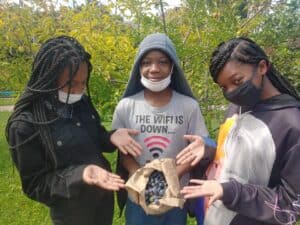 Located in the McElderry Park Community of Baltimore, the Amazing Port Street Gardens are an important feature of the neighborhood, although recently they had fallen into some disrepair. The grant enabled a team of dedicated volunteers to complete some much-needed revitalization of the gardens.
Located in the McElderry Park Community of Baltimore, the Amazing Port Street Gardens are an important feature of the neighborhood, although recently they had fallen into some disrepair. The grant enabled a team of dedicated volunteers to complete some much-needed revitalization of the gardens.
Even through the pandemic, the gardens have allowed neighbors to connect regularly, growing good things together, including not just food, but also pollinator and rain gardens. Three youth were hired to assist in stewarding the greenspace and harvesting vegetables to share with neighbors. Renovation of the rain gardens has already been completed, and volunteers are currently working to rebuild the raised bed flower gardens that beautify the Green Space, serving as a healing place for the community.
the raised bed flower gardens that beautify the Green Space, serving as a healing place for the community.
This project provided the opportunity to do healing work together in this world, and to cultivate not only good things from Mother Earth, but to also nurture kindness and love within our community.
Blue Ridge Center for Environmental Stewardship
Project: Bat Monitoring Project
The Healthier, Greener, Kinder Foundation paid for the installation of two automated ultrasonic bat recording monitors at the Blue Ridge Center for Environmental Stewardship (BRCES) in northern Virginia. These stations were part of a county-wide bat monitoring project that involved installation of 13 monitors at parks, farms, wildlife sanctuaries, and a school. This project is important because identification of the bats will help conservationists to protect them. Data from the project has been provided to the North American Bat Monitoring Program.
According to data from the monitors, eight different species of bats (including several that are endangered) were found at BRCES during the study: Little Brown, Silver Haired, Tri-Colored, Big Brown, Eastern Red, Hoary, Evening, and Brazilian Free-Toed Bat. The graphic below shows a recording of echolocation and feeding:
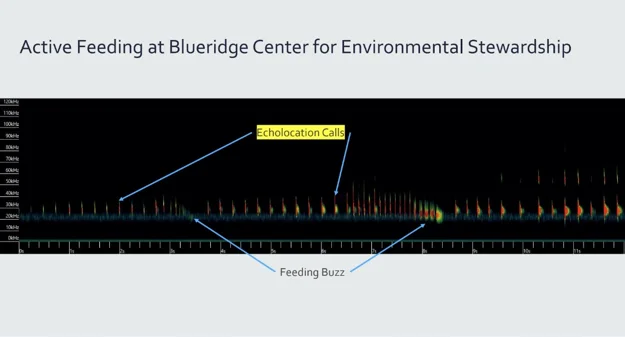
BRCES will use the information gained during the study to provide educational opportunities for visitors and to contribute to long-term scientific gains in the fight to conserve bat populations, many of which have been adversely affected by habitat loss and white nose syndrome.
In case you are wondering why we should care about bats: 1) they eat a lot of mosquitos and other bugs; 2) they pollinate foods that we like to eat; 3) they are the only mammal that flies; and 4) they help to preserve the rain forests. And there’s a lot more. Learn about the benefits of bats in an article by the National Wildlife Federation.
C&O Canal Trust
Project: “Canal For All” Program
 After a year-long hiatus due to the pandemic, the C&O Canal Trust’s “Canal For All” program was enthusiastically restarted in 2021. Community Bridges, a long-time community partner based in Montgomery County, brought its participants to the park for three different outings, totaling 48 youth and adults between the three programs. On July 24, they came to Great Falls for Latino Conservation Week, a nationwide effort to recognize the roles and activity of Latinx communities in public outdoor spaces, and participated in guided hikes, conservation-focused activities, and even got to meet the mules! On July 14 and August 12, they explored the history and nature of two different trails in the park, learning about themselves and their own capabilities in the process.
After a year-long hiatus due to the pandemic, the C&O Canal Trust’s “Canal For All” program was enthusiastically restarted in 2021. Community Bridges, a long-time community partner based in Montgomery County, brought its participants to the park for three different outings, totaling 48 youth and adults between the three programs. On July 24, they came to Great Falls for Latino Conservation Week, a nationwide effort to recognize the roles and activity of Latinx communities in public outdoor spaces, and participated in guided hikes, conservation-focused activities, and even got to meet the mules! On July 14 and August 12, they explored the history and nature of two different trails in the park, learning about themselves and their own capabilities in the process.
The program’s expansion into Washington County was no less invigorating. Two new partner organizations, the Boys & Girls Club and Girls, Inc., both of Hagerstown, brought multiple groups out to Four Locks. The younger children’s groups, ranging in age from 5 to 12, toured Lockhouse 49, discovered what pumping water from the hand pump and carrying it in buckets is like, walked a bit down the towpath, pretended they were approaching the locks and “woke up the lockkeepers,” found wild edibles and animal tracks, and starting learning interesting facts in their Junior Ranger booklets. The teen group, ages 13-16, toured the lockhouse and did some similar historical role-playing, and took a longer hike down the towpath to check out the stunning rock formations in the Big Slackwater section of the Potomac River. Between the two organizations, 220 participants came to Four Locks between July 21 and August 11, including a group of children who had the opportunity to come back again and gleefully did so, eager to share with others what they remembered. All groups, including many of the children, said they can’t wait to come back and do Canal For All programs again in 2022!
Our connection: Leigh and Mark and the family dog, Penny, frequently hike on the wonderful C&O Canal towpath.
Community FarmShare
Project: Recipe Book for Produce Box Recipients
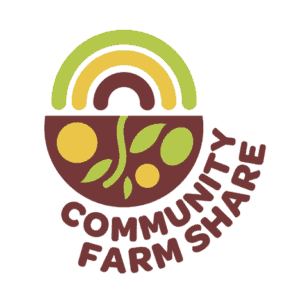 What if your family received a bountiful box of fresh produce each week but had previously been more accustomed to eating pre-made, packaged, processed foods? It might be a challenge to turn those veggies into a nutritious and flavorful meal. That was an issue that Community FarmShare identified, and they decided that the solution was to provide recipe books for the families who were receiving weekly produce boxes from them.
What if your family received a bountiful box of fresh produce each week but had previously been more accustomed to eating pre-made, packaged, processed foods? It might be a challenge to turn those veggies into a nutritious and flavorful meal. That was an issue that Community FarmShare identified, and they decided that the solution was to provide recipe books for the families who were receiving weekly produce boxes from them.
Using a grant from our Foundation, Community FarmShare hired an intern to assemble the recipe book. A Poolesville High School student named Ava tackled the project last spring and quickly assembled the recipe book. The contents were reviewed by a registered dietician to ensure that the recipes would meet the program’s nutritional standards.
We are pleased to report that the project was successful in two ways: 1) the recipe books reached 294 families; and 2) Ava received valuable experience that will jumpstart her intended career in equitable food systems, local agriculture, and the value of increasing consumption of healthy, plant-based foods to address chronic disease. She’ll start working toward a degree at St. Mary’s College on the Eastern Shore in the fall.
Here is one of the recipes in the book:
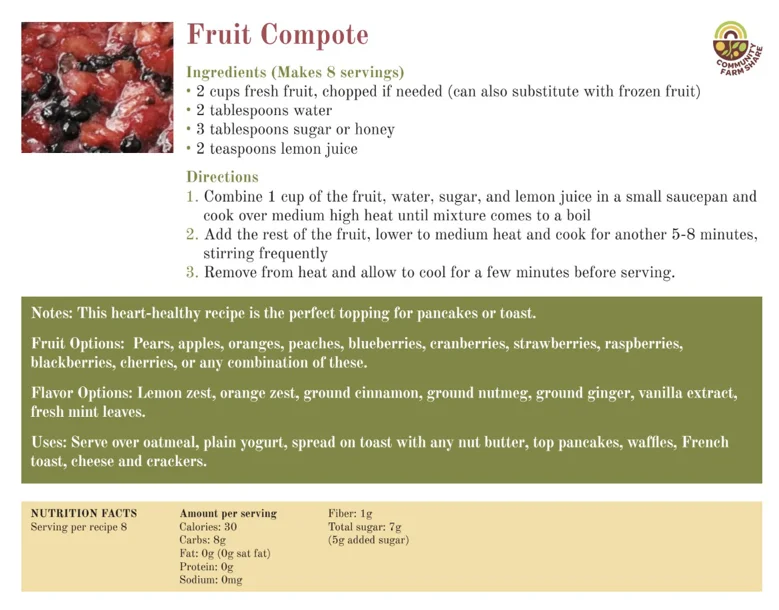
Community Relief and Development Action (COREDA)
Project: Feeding African Schoolchildren
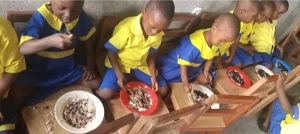
We run an elementary school in Tiko, Cameroon, for orphans and internally displaced children, many of whom made dangerous journeys out of rebel-controlled territory to seek an education. Each day these young children had to choose between attending school or finding food, and it was heartbreaking to hear the children sob from hunger when they chose school. Additionally, many of the children were afflicted with intestinal worms, which are a common cause of diarrhea and abdominal pain among our children, and the worms exacerbate nutritional deficiencies.
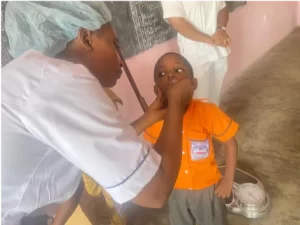 Project results: All 181 of the children in the school are now receiving a nutritious meal once per week. 154 children also received deworming medicine (the parents/ guardians of 27 children did not consent to the medicine). A team consisting of one medical doctor and three nurses carried out the program, checking the vital signs of the children and administering the deworming medicine. Some children were referred elsewhere for further treatment. The overall health of the children at the school has improved significantly.
Project results: All 181 of the children in the school are now receiving a nutritious meal once per week. 154 children also received deworming medicine (the parents/ guardians of 27 children did not consent to the medicine). A team consisting of one medical doctor and three nurses carried out the program, checking the vital signs of the children and administering the deworming medicine. Some children were referred elsewhere for further treatment. The overall health of the children at the school has improved significantly.
~ Etuge Sumbede Elvis, COREDA’s founder and director
Durham Central Park
Project: Piedmont Prairie Garden
On April 9th, we installed a “Piedmont Prairie” garden at Durham Central Park on the hillside behind the Pavilion. We planted about 75 plants: ⅔ native grasses (Panicum and Mulhenbergia) and ⅓ native perennials (Rudbeckia, Monarda, Rattlesnake Master, Verbena, Mountain Mint and others).
On the date of the planting, we discussed a couple of options for mulching the planting with the landscaping company. Together, we decided to try a “green mulch” approach. That meant that instead of pulling the spring weeds that had come up in the planting area, the team pulled weeds only in the area that a grass or plant would be installed and left the other weeds to grow. We heavily mulched directly around the new plants with hardwood mulch to help them get established and retain water. This was the best strategy to minimize erosion (in the event of heavy rain) for this planting because the planting area is on a steep slope.
The objectives of this project were: 1) to change the area to a lovely, native garden that requires very little maintenance; and 2) to install native flowers and grasses that will provide forage and habitat for the native pollinator and bird populations.
In the first three months since garden installation, we have observed a hillside garden that is absolutely buzzing with life! We have seen many types of pollinators, including bees, wasps, butterflies, and birds enjoying the new plants. This area, as a tightly mown lawn, was completely absent of life until we planted these new plants.
We are excited to see the success of this planting. This Piedmont Prairie planting has been a testing ground that has proven that prioritizing native grasses and perennials into the landscape at Durham Central Park is a smart and successful move.
Thank you for providing the funding to make this experiment come to life! We hope that this planting is just the beginning of a shift towards more sustainable, native plantings not just here in the park and downtown Durham, but far beyond. As the planting becomes established, park visitors will be able to enjoy an attractive garden that has color and interest twelve months a year. Moving forward, we would like to be able to install some informational signs to highlight the value and benefits of native plants in an urban landscape.
Durham Habitat for Humanity
Project: Landscaping for Habitat Homes
On behalf of Durham Habitat, thank you for your partnership in helping envision a new neighborhood of 21 homes on Morning Glory Avenue and N. Plum Street. Though landscaping a home may be the “ribbon on a gift,” it is by far more than that. With your funding, you have helped create a home that is green in many ways; equitable with the surrounding neighborhoods; safe for children to play; and environmentally friendly for not only these homeowners but for the climate as well.
We are proud of this block of new homes. With your help we know that landscaping these lots promotes a healthy lifestyle, keeps homeowner costs down, and brings neighbors out and together more. And in a town – and a world – where racial inequity is so present in many neighborhoods, we are excited to provide families with a safe, affordable, and green place to live.
Here are a few of the many photos that were taken of first-year Duke University Fuqua MBA
House with a Heart
Project: “K9 & Kitty Medical Miracles” Program
House with a Heart (HWAH) provides medical grants up to  $1,000 per case to pay veterinary bills for rescue partners who save senior dogs and cats from shelters or owner give ups. This year, HWAH provided 20 of these lifesaving medical grants.
$1,000 per case to pay veterinary bills for rescue partners who save senior dogs and cats from shelters or owner give ups. This year, HWAH provided 20 of these lifesaving medical grants.
Bella’s story is an example of the miracles that can happen when a pet receives the right care. Bella came to HWAH through MASTER Rescue when her owner could no longer afford her medical care. As shown in the photo on the left, she was terribly matted and missing hair on her belly and her legs. She was skeletal as a result of being so underweight, and her toenails had turned around to pierce her paw pads.
With loving care, medicated baths, and small meals several times a day, Bella began to improve. She gained almost two pounds per week, her hair began to grow back in, her energy level increased, and her bubbly Westie personality began to show itself.
times a day, Bella began to improve. She gained almost two pounds per week, her hair began to grow back in, her energy level increased, and her bubbly Westie personality began to show itself.
Within a few months, Bella was a healthy, happy dog with lots of pep in her step, and MASTER Rescue decided that Bella was well enough to find a loving Forever Home. It didn’t take long for the rescue to find an incredible family in New York who had recently lost their beloved Westie and wanted to rescue another senior.
Project: “Feed Fido and Fluffy” Pet Pantry
House with a Heart (HWAH) started the “Feed Fido and Fluffy” Pet Pantry in response to a community need that arose from COVID-19. The program supplies pet food and supplies to several local nonprofits and pet owners as needed.
Fluffy” Pet Pantry in response to a community need that arose from COVID-19. The program supplies pet food and supplies to several local nonprofits and pet owners as needed.
One HWAH volunteer, Sarah, makes a delivery once a month to a low-income senior and disabled independent living facility in Montgomery City, MD. According to Sarah, “Once a month, I pull my red wagon full of requested pet food and supplies into the senior apartment building where I’m greeted by a dozen dogs and their owners. Mercifully, the cats stay in their apartments! Not only do I bring food, treats, and supplies, but I also give lots of head scratches and belly rubs, chat with owners, celebrate holidays, and share in the sadness when a beloved pet crosses the Rainbow Bridge.”
No Child Goes Hungry
Project: Purchase of a Refrigerator for Garden Produce at Odyssey Charter Schools
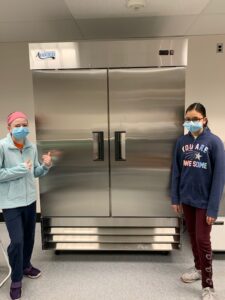 With help from the Healthier, Greener, Kinder Foundation, No Child Goes Hungry (NCGH) provided a donation to Odyssey Charter Schools in Wilmington, Delaware, to purchase a community refrigerator to help preserve its campus-grown produce and student-produced meal kits it donates to families in need. The refrigerator was purchased through a collaborative effort with a $1,000 grant from the Healthier, Greener, Kinder Foundation, $500 from NCGH, and $500 in fundraising from Melissa Blair Tracy, a teacher at Odyssey Charter Schools who is leading the School’s community garden program.
With help from the Healthier, Greener, Kinder Foundation, No Child Goes Hungry (NCGH) provided a donation to Odyssey Charter Schools in Wilmington, Delaware, to purchase a community refrigerator to help preserve its campus-grown produce and student-produced meal kits it donates to families in need. The refrigerator was purchased through a collaborative effort with a $1,000 grant from the Healthier, Greener, Kinder Foundation, $500 from NCGH, and $500 in fundraising from Melissa Blair Tracy, a teacher at Odyssey Charter Schools who is leading the School’s community garden program.
Odyssey Charter Schools has taken an innovative and impactful approach to support its community’s food insecurity needs and teaching students the values of homegrown sustenance and philanthropy. It is currently operating two garden programs to help support its community’s families’ meal and health needs under the leadership of Tracy, who is passionate about food justice and healthy eating.
“We donate 100 percent of our garden’s crop to people in need, particularly children. We donate eighty percent of the harvested produce to food-insecure families with children, and the remainder is consumed on-site by nearly 2,000 students at our KN-twelfth grade school. In addition to the produce, my students assemble culturally responsive and plant-based meal kits. We pair the hydroponically grown produce with donated food items. Our team of volunteers manages the garden in the summer in the absence of students,” said Tracy.
With the new on-campus refrigerator, Tracy and her students can refrigerate their freshly harvested vegetables from their outdoor school garden and student-run hydroponic lab. Previously, without the refrigerator, some of the produce could not be distributed before it was spoiled.
Project: Purchase of a Refrigerator for the Mott Haven Fridge Network
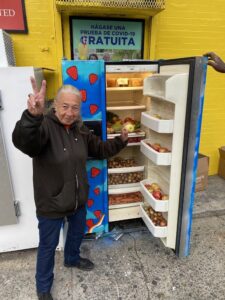 In collaboration with the Healthier, Greener, Kinder Foundation, No Child Goes Hungry (NCGH) recently provided Mott Haven Fridge Network with a $2,000 grant. The funds enabled Mott Haven Fridge to add and winterize a third community refrigerator to its hunger-relief network based in Uptown Manhattan and the Bronx.
In collaboration with the Healthier, Greener, Kinder Foundation, No Child Goes Hungry (NCGH) recently provided Mott Haven Fridge Network with a $2,000 grant. The funds enabled Mott Haven Fridge to add and winterize a third community refrigerator to its hunger-relief network based in Uptown Manhattan and the Bronx.
Two sixth-grade teachers founded Mott Haven Fridge Network in response to the widespread food insecurity they witnessed among their students’ families. Mott Haven Fridge maintains three outdoor, freestanding refrigerators that provide community members in the poorest congressional district in the United States with 24/7, no-questions-asked-access to fresh produce and other essentials. The ‘fridges are stocked by donations from individuals, local businesses, and community partners, and they are cleaned and maintained by a grassroots community volunteer network. With accolades from local, national, and international news, Mott Haven Fridge is a lifeline and beacon of hope for a community plagued by food insecurity.
According to NCGH Founder and Director Kären Rasmussen, tackling the issue of childhood hunger in a region of two million people may intimidate some people, but not the volunteers on the Mott Haven Fridge team. She said, “They understand that it all begins with one meal, one child at a time. I am thrilled to help support their mission for a hunger-free New York City.”
One Earth Conservation
Project: Increasing and Evaluating Nesting Success of Endangered Yellow-Naped Amazon Parrots on Ometepe Island, Nicaragua
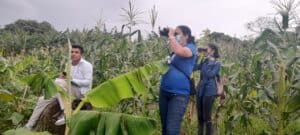 In Nicaragua, One Earth Conservation guides and funds the monitoring of parrots on the islands of Lake Nicaragua, also known as Lake Cocibolca. One Earth Conservation and its partners have found the endangered Yellow-Naped Amazon in numbers worthy of conservation on Ometepe Island. Ometepe Island has one of the densest, if not the densest, and most numerous populations of this species in all of its range. One Earth Conservation and its partners are involved in nest monitoring and protection, as well as the education, awareness, and community enhancement aspects of these important conservation areas.
In Nicaragua, One Earth Conservation guides and funds the monitoring of parrots on the islands of Lake Nicaragua, also known as Lake Cocibolca. One Earth Conservation and its partners have found the endangered Yellow-Naped Amazon in numbers worthy of conservation on Ometepe Island. Ometepe Island has one of the densest, if not the densest, and most numerous populations of this species in all of its range. One Earth Conservation and its partners are involved in nest monitoring and protection, as well as the education, awareness, and community enhancement aspects of these important conservation areas.
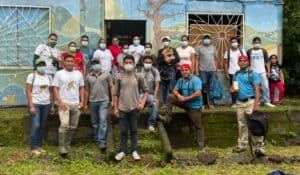 This project was designed to help conservationists learn the best times to count and what the birds are doing in the most populous area on the island. Funds provided by the project were used to purchase materials and for the labor to construct nest boxes, pay stipends to our climbing team members to install the nest boxes, pay stipends to our counting team members and for nest patrol activities, purchase gasoline for the motorcycles used by the counting team members and community patrols, and purchase snacks for the counting team members (who are in the field for hours and need some sustenance).
This project was designed to help conservationists learn the best times to count and what the birds are doing in the most populous area on the island. Funds provided by the project were used to purchase materials and for the labor to construct nest boxes, pay stipends to our climbing team members to install the nest boxes, pay stipends to our counting team members and for nest patrol activities, purchase gasoline for the motorcycles used by the counting team members and community patrols, and purchase snacks for the counting team members (who are in the field for hours and need some sustenance).
There were over 20 people involved in the project — the parrot conservationists, volunteers, and community members. They completed 12 afternoons of counts, and each count requires quite a bit of paperwork. The counting of parrots is good from a conservation evaluation perspective, and it’s very good for building team work, relationships, and understanding of parrots (and hence a commitment to them).
Project: Parrot Nest Box Monitoring in Nicaragua
 For the second year in a row, our Foundation has supported One Earth Conservation‘s efforts to protect yellow-naped parrots on Ometepe Isand in Nicaragua. The project is designed to reduce poaching of parrot chicks by hiring local residents for parrot counts and nest box monitoring.
For the second year in a row, our Foundation has supported One Earth Conservation‘s efforts to protect yellow-naped parrots on Ometepe Isand in Nicaragua. The project is designed to reduce poaching of parrot chicks by hiring local residents for parrot counts and nest box monitoring.
During parrot breeding season on Ometepe Island last March, Dr. LoraKim Joyner from One Earth Conservation worked with conservationists from BIOMETEPE and Flora and Fauna International in three communities (Balgue, La Palma, and Cuchilla) on the island. The project team climbed trees containing parrot nests in order to assess the health of the chicks. Afterwards, Dr Joyner provided a half-day training class on Parrot Care and Welfare. The conservationists discovered about 40 active nests during Dr. Joyner’s visit.
The photo album below shows scenes from the project: Dr. Joyner riding on the back of a motorcycle, which is the common mode of transportation on the island; 2) a climber preparing to take a photo of chicks in a nest cavity; 3) three chicks in the nest; and 4) a parrot chick being examined and treated for subcutaneous fly larvae.
Peace of Mind Inc.
Project: Quinn and The Worry Channel,
A Children’s Book to Encourage Peace of Mind
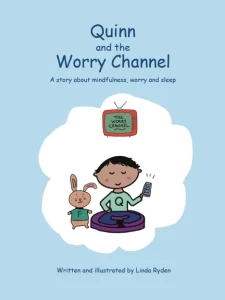
People of all ages are now in a pandemic-related mental health crisis, and a grant from our Foundation has supported the publication of a book that teaches children how to recognize and manage their emotions. This new book is part of The Peace of Mind Storybook Series by Linda Ryden. The story focuses on an elementary-school-aged child named Quinn who can’t sleep due to worries about various problems. Fred the Bunny, a beloved stuffed toy, acts as a mindfulness guide, helping Quinn to notice thoughts and consciously “change the channel” to thoughts that are more helpful in the moment.
Linda wrote and illustrated this book for children aged 5-12, although the message and the metacognition practice it teaches are useful for all of us, no matter your age. You can find out more about the book and order a copy through the Peace of Mind website or add one to your next Amazon order.
Pee Wee Homes
Project: “Dignified Doors” Project
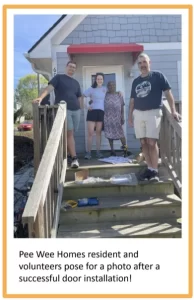
The mission of Pee Wee Homes is to create dignified, affordable, tiny homes in a caring community for, and with, people transitioning out of homelessness. In keeping with the mission to create dignified tiny homes, this project addressed a need articulated by residents: a desire to have a screen door at their home’s entrance.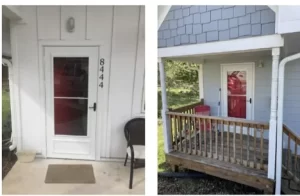
So, with support from our Foundation, volunteers installed dual-functioning storm doors with screens to provide all Pee Wee Homes residents with increased access to fresh air, natural light, and visibility. Coined “Dignified Doors,” this project was designed to help promote resident engagement with their outdoor space and connection to community. Volunteers applied a fresh coat of paint to the doors before installing the screen doors. They also delivered new porch furniture that will provide residents a comfortable place to enjoy their newly renovated porches. Residents are very pleased with the upgrades.
River Road Unitarian Universalist Congregation's Immigration Action Team
Project: Purchase of Beds for an Afghan Refugee Family
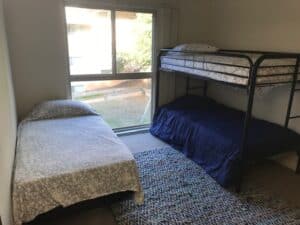 River Road Unitarian Universalist Congregation’s Immigration Action Team helped set up an apartment in Landover, Maryland, for a recently-arrived Afghan family of eight, in cooperation with Lutheran Social Services Refugee Resettlement program. Thanks to the $1,000 grant received from the Healthier, Greener, Kinder Foundation, the Team was able to purchase beds for three of the six children – including a bunk bed and twin bed. Such families went through a great deal of trauma in escaping the Taliban takeover, which targeted persons who had helped the U.S. or Afghan government forces. Fresh mattresses and welcoming apartments are an important part of refugee resettlement.
River Road Unitarian Universalist Congregation’s Immigration Action Team helped set up an apartment in Landover, Maryland, for a recently-arrived Afghan family of eight, in cooperation with Lutheran Social Services Refugee Resettlement program. Thanks to the $1,000 grant received from the Healthier, Greener, Kinder Foundation, the Team was able to purchase beds for three of the six children – including a bunk bed and twin bed. Such families went through a great deal of trauma in escaping the Taliban takeover, which targeted persons who had helped the U.S. or Afghan government forces. Fresh mattresses and welcoming apartments are an important part of refugee resettlement.
By cobbling together donations from many different sources, the Immigration Action Team was able to fill the apartment’s bedrooms with cozy beds and comforters and the kitchen with a week’s worth of food, as well as dishes, silverware, cookware, dining table, chairs, lamps and sofa. Three days after the beds were delivered and set up, the family was able to move in and begin their new life in the U.S.
Second Chance Wildlife Center
Project: Construction of a New Wildlife Rehab Facility
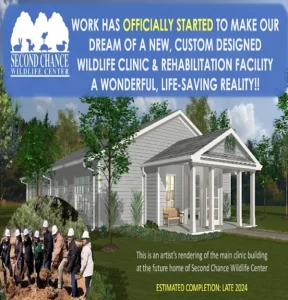 In 2021, the Healthier, Greener, Kinder Foundation provided $1,000 to the capital campaign for a new, custom-designed facility for Second Chance Wildlife Center.
In 2021, the Healthier, Greener, Kinder Foundation provided $1,000 to the capital campaign for a new, custom-designed facility for Second Chance Wildlife Center.
We are pleased to pass along this update, and we wish them much success with their construction:
After many years of project-designated fundraising, designing and re-designing floorplans for optimal care, finding a suitable location, and, most recently, completing a very lengthy process to receive our key building permit, SCWC recently broke ground for our new wildlife medical clinic and rehabilitation facility! It’s a unique and complex project, but if all goes according to plan, we hope to move our operations to 26400 Haines Road in Clarksburg, Maryland, in late 2024.
Unitarian Universalist Animal Ministry
Project: Animal Influencers Speaker Series
One of the inspiring presentations offered this year on Zoom by UU Animal Ministry featured Renee King-Sonnen, founder of Rowdy Girl Sanctuary.
Renee was a rancher’s wife when she experienced a terrible car accident and was ejected from the auto at 80 mph. The resulting severe pain led her to practice yoga as part of her recovery, which exposed her to the concept of ahimsa: lovingkindness for all beings. With ahimsa in her mind and heart, Renee began to be troubled by the activities of the ranch. For example, 6- to 8-month-old calves were sent to the “sale barn” twice a year. When the calves were loaded in the trailer and were being driven off, cows would chase the trailer, galloping along the fenceline for a mile and a half, “wailing and crying.” But it wasn’t all cows who chased the trailer — just those whose babies were being taken.
terrible car accident and was ejected from the auto at 80 mph. The resulting severe pain led her to practice yoga as part of her recovery, which exposed her to the concept of ahimsa: lovingkindness for all beings. With ahimsa in her mind and heart, Renee began to be troubled by the activities of the ranch. For example, 6- to 8-month-old calves were sent to the “sale barn” twice a year. When the calves were loaded in the trailer and were being driven off, cows would chase the trailer, galloping along the fenceline for a mile and a half, “wailing and crying.” But it wasn’t all cows who chased the trailer — just those whose babies were being taken.
Renee began bottle feeding two calves, one of whom she named Rowdy Girl. During these feeding sessions, Renee began to see all the cows as individuals. She started to give them names. Tommy, Renee’s husband said, “You can’t name the cows. If you name them, you won’t want to sell them.” Life became combative in her home, with Renee challenging Tommy on a daily basis. This went on for five years. Eventually Renee became vegan, and she refused to let Tommy take the animals to be sold. But Tommy felt that he had to sell the cows in order to make bring in the money that they needed to live. Finally, Renee hit on the idea of buying the cows from her husband. She raised over $30,000 to do so.
The ranch became Rowdy Girl Sanctuary, which now takes care of 63 cows and more than 100 animals. And even Tommy was convinced; he is now vegan. In addition to running Rowdy Girl Sanctuary, Tommy and Renee also run rancheradvocacy.org, which helps ranchers convert from animal ranching to producing plant-based foods.
Renee’s talk was an inspiration! You can watch it here.
Worthy Dog Rescue
Project: Helping Dogs in Distress
Dexter spent his entire life on a chain, isolated and ignored. When the Worthy Dog Rescue team met him, he was shivering from the cold and chewing on a stick, probably out of boredom and hunger. Dexter was severely underweight and malnourished, riddled with parasites, his ears were infected, his skin was inflamed, and he had scars on his muzzle from fly bites. It was obvious that he didn’t feel well, but he was still so happy to have some attention, and he soaked up any kindness and affection the Worthy Dog team would give him. Worthy Dog took Dexter into their care on that day and then spent several months focused on his rehabilitation.
 Dexter had an incredible foster mom, Lou, who managed his medical recovery and gave him the first stable, safe living space he’s ever known. He learned that he could count on meals and fresh water, and he didn’t need to scurry to find shelter to ride out a bad storm. He discovered his passion for toys and learned to be part of a pack. Dexter took cues from the family dogs in his foster home and saw a very different way of life. He gained strength in his back leg muscles that had atrophied from lack of movement, put on 20 pounds, was treated for heartworm and skin and ear infections, and was neutered. Soon thereafter, Dexter began a new life in an incredible forever home. He now lives in a lovely home with a big fenced yard near the water in Annapolis. He has two committed parents, Laci and Zach, and a new Bully best friend named Cher. He has more toys than he could wish for, is eating a real-food diet, and will be starting water therapy soon to increase his leg strength. He gets daily walks, and Laci reports she’s even seen him do zoomies in the yard. What a wonderful happy ending!
Dexter had an incredible foster mom, Lou, who managed his medical recovery and gave him the first stable, safe living space he’s ever known. He learned that he could count on meals and fresh water, and he didn’t need to scurry to find shelter to ride out a bad storm. He discovered his passion for toys and learned to be part of a pack. Dexter took cues from the family dogs in his foster home and saw a very different way of life. He gained strength in his back leg muscles that had atrophied from lack of movement, put on 20 pounds, was treated for heartworm and skin and ear infections, and was neutered. Soon thereafter, Dexter began a new life in an incredible forever home. He now lives in a lovely home with a big fenced yard near the water in Annapolis. He has two committed parents, Laci and Zach, and a new Bully best friend named Cher. He has more toys than he could wish for, is eating a real-food diet, and will be starting water therapy soon to increase his leg strength. He gets daily walks, and Laci reports she’s even seen him do zoomies in the yard. What a wonderful happy ending!
